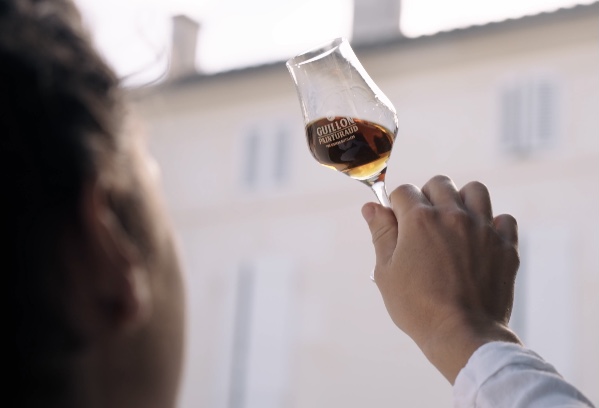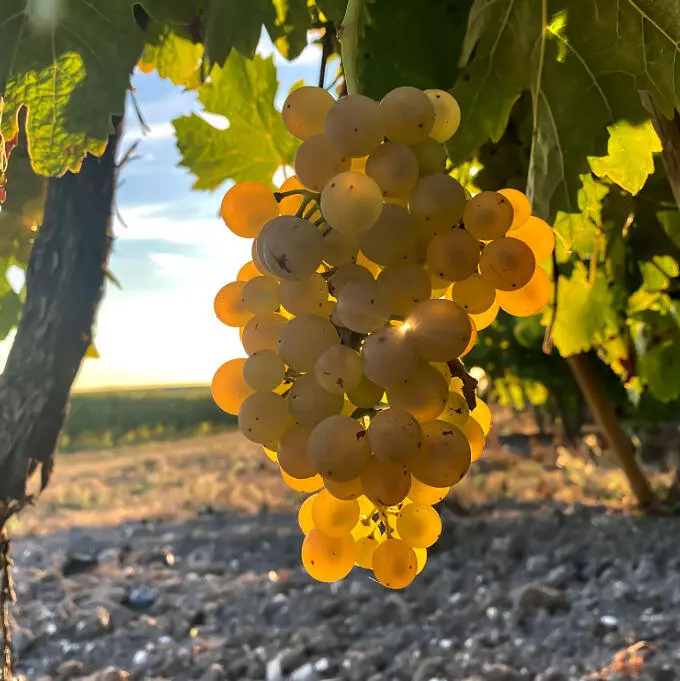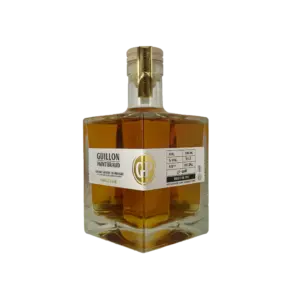A decree dated January 13, 1938 delimited the Cognac production area (about 80,000 ha) into 6 classified crus, representing 6 different designations..
Officiellement délimitée en 1909, ces crus ont été délimités en fonction des différents sols, sous-sols et micro-climats, donnant à chacun une particularité aux eaux-de-vie qu’ils produisent. Les sols de la Grande Champagne sont argilo-calcaires, et, plus on s’approche de la côté Atlantique, plus les sols seront sableux. Le cépage utilisé pour le Cognac reste le même à 98% : il s’agit de Ugni-Blanc.
1st cru of Cognac : The Grande Champagne
The Grande Champagne is the most central cru of the vineyard, between the river Charente and its tributary the Né. It represents about 17% of the Cognac vineyard (13,200 ha).
Its clay-limestone soil argilo-calcaire permet d’obtenir des eaux-de-vie d’exception, fines et parfumées, nécessitant un long vieillissement pour exprimer leur complexité aromatique. Le potentiel de vieillissement est effectivement un avantage clé de ce premier cru. Les eaux-de-vie vont pouvoir vieillir très longtemps ; même au bout de 50 ans de vieillissement, elles continueront à développer des arômes. En revanche, pour les autres cru, le potentiel de vieillissement est plus restreint et l’eau-de-vie atteindra son apogée au bout de 10 ou 20 ans.
The 5 other crus of the appellation
The Petite Champagne
It has more or less the same characteristics, but with a slightly less chalky soil. It represents 19% of the vineyard (15 200 ha). N.B.: the designation "Cognac Fine Champagne" corresponds to a minimum of 50% Grande-Champagne Cognac, completed with Petite Champagne. { The term champagne comes from the Latin "campania" meaning countryside or open plain: as opposed to wooded areas. This agronomic term is used in reference to the Champagne lands, having the same soil. }
The Borderies
It gives round and sweet Eaux-de-vie. It is the smallest cru, occupying 5% of the vineyard (and renowned for the quality of its eaux-de-vie).
The Fins Bois
They surround the previous crus on 40% of the total surface, and are recognised by the suppleness of their eaux-de-vie.
The Bons Bois (12%) and the Bois Ordinaires (1.5%)
They are made up of silty or sandy soils.
Ces trois derniers crus produisent des eaux-de-vie à faible potentiel de vieillissement.
Advantages of a family estate
Our family estate is ideally located in Grande-Champagne, at the heart of the Cognac vineyard, the first cru of the designation. Thanks to this geographical location, we are specialised dans les très longs vieillissements ! Nous laissons nos eaux-de-vie dormir tranquillement et prendre le temps de développer leurs meilleurs arômes. Ces arômes sont fréquemment répertoriés afin d’évaluer le temps que nos eaux-de-vie pourront encore passer en barrique. Une fois que ressortent les meilleurs arômes et toute la finesse recherchée, il est temps de passer à l’assemblage !
Pour pouvoir s’appeler cognac, le cognac doit obligatoirement être fabriqué dans la zone d’appellation, donc dans l’un des six crus évoqués. En dehors de cette zone, nous l’appelons brandy. Pour connaître les différences entre le cognac et le brandy, c’est par ici !






